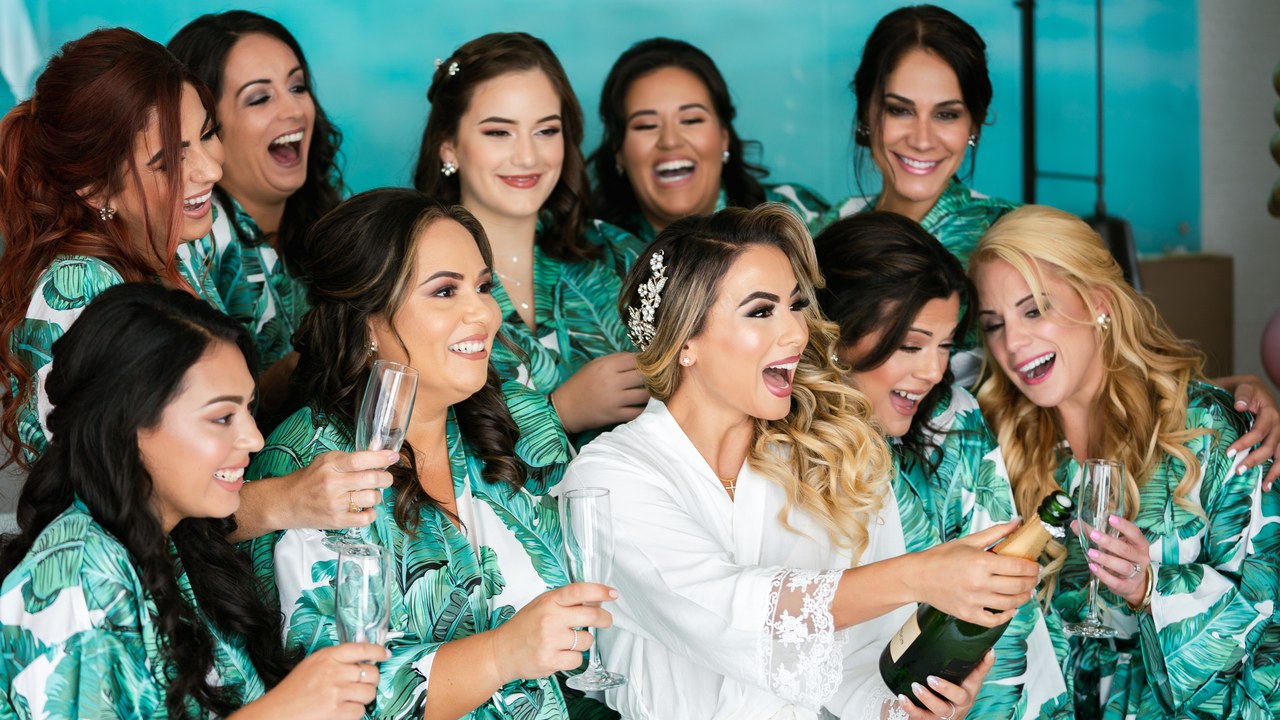Why More Brides Are Getting Pre-Wedding Filler Injections and Botox

Planning a traditional wedding requires a few key things: a florist, the band or DJ, the cake, and the ability to keep track of finding, hiring, and paying for all of them. (Fun!) Now, you can add visiting a dermatologist to that laundry list. But forget a nice, relaxing facial—these days, more brides to be are springing for cosmetic injectables to smooth crinkles and plump lips before their wedding day.
“We have definitely seen an uptick in consultations with brides-to-be who want to get a skin care game plan even a year before the big day,” says Kristel Polder, M.D., a board-certified dermatologist at Dallas Center for Dermatology and Aesthetics in Dallas, TX. “Brides want to look good for all aspects surrounding a wedding—portraits, bachelorette party, wedding, and honeymoon.”
Cosmetic injectables are a natural fit for this. “Fillers have a longevity that allows you to maintain these results through the process,” Polder says. “Particularly with millennials, we’ve been asked for smaller dosing to test out fillers in their lips, cheeks, and under their eyes.” Meanwhile, neuromodulators (or “wrinkle reducers” as they’re more commonly called) such as Botox and Dysport have become popular among brides for specific areas of the face.
Polder’s clinical experience is reflective of the large-scale trend of pre-wedding injectables. RealSelf, a review site that tracks the popularity of cosmetic treatments, found that in the past year, neuromodulators accounted for 15% of nonsurgical pre-wedding treatments, with injectable fillers close behind at 14.15%. This follows the overall rise in the use of injectables, which are no longer solely within the realm of antiaging. That is, actual aging is no longer a prerequisite for cosmetic injectables.
Instead, contoured cheekbones, preternaturally smooth foreheads, and plump lips have taken over Instagram feeds and celebrity faces alike, underscoring the new role of cosmetic injectables as a way to sculpt and augment in addition to lift and firm—no matter your age. (Unsurprisingly, the look has been been dubbed “Instagram Face.”) And they’ve been embraced accordingly. According to the American Society of Plastic Surgeons, the number of filler procedures among people between 30 and 39 years old has grown by nearly 30% since 2010. (And of those, the number of hyaluronic acid filler injections in particular, such as Juvéderm or Restylane, has almost doubled.) Meanwhile, the number of neuromodulator procedures among patients between 30 and 39 has increased by nearly 35% to 1.3 million.
